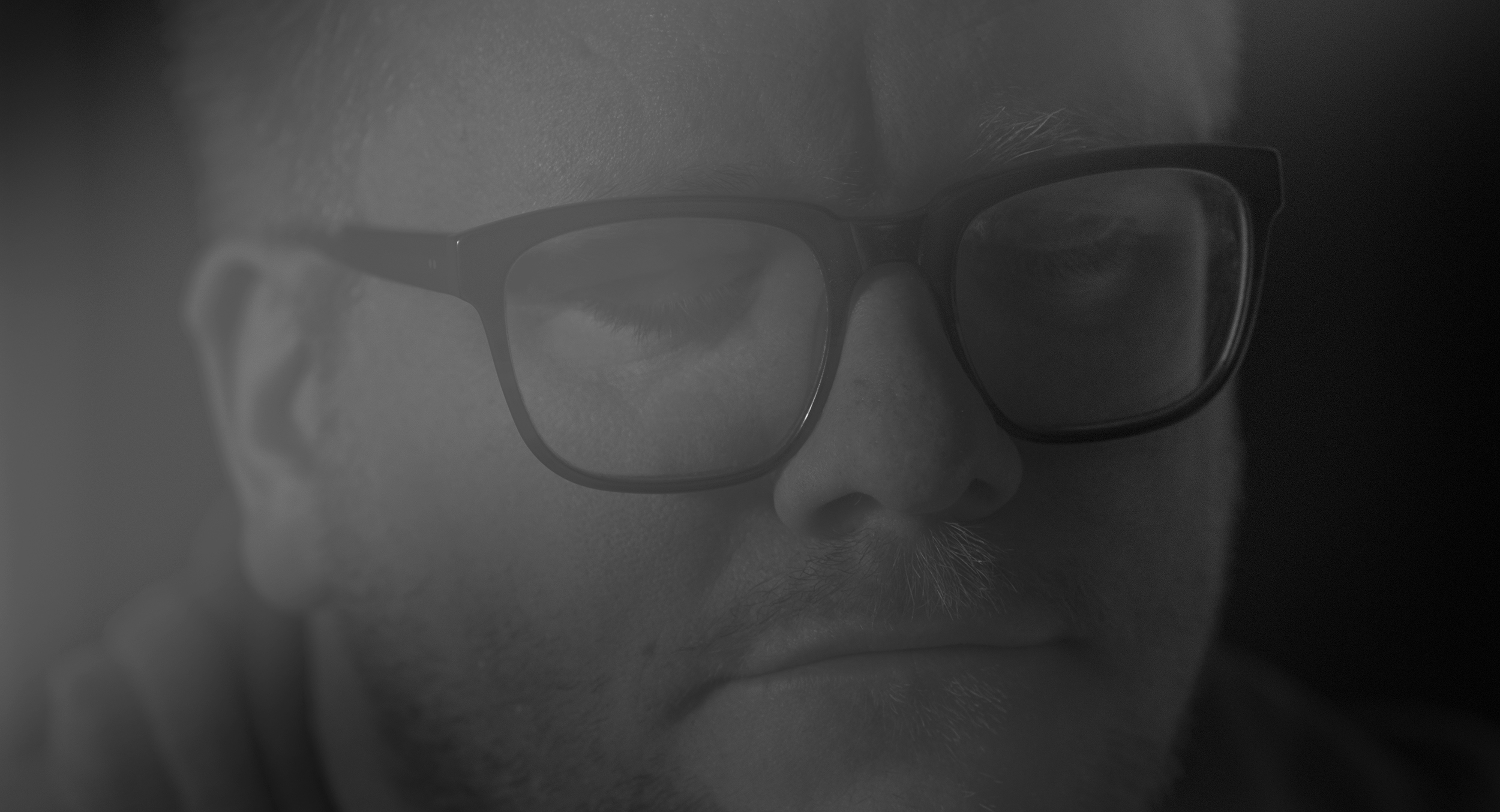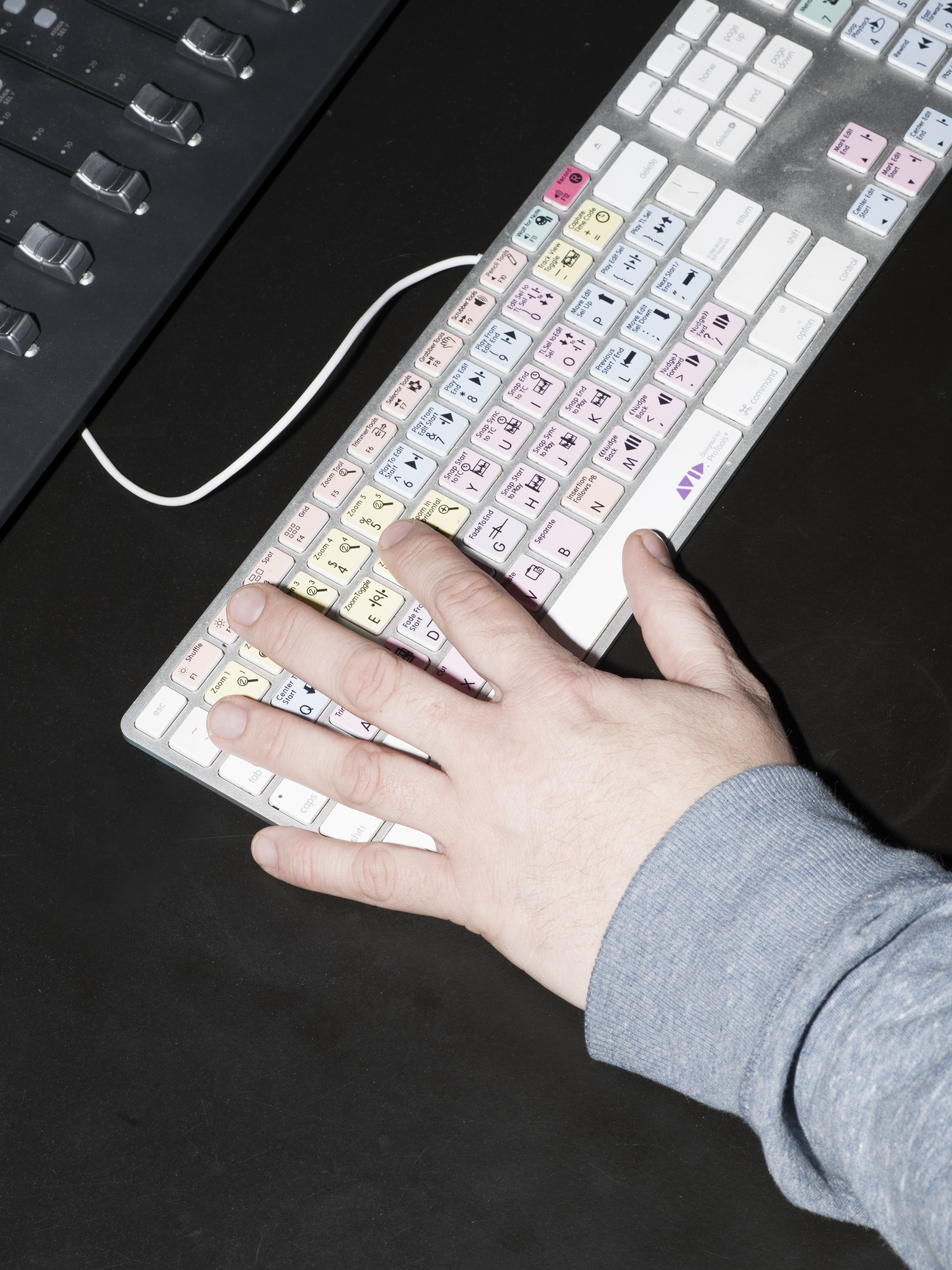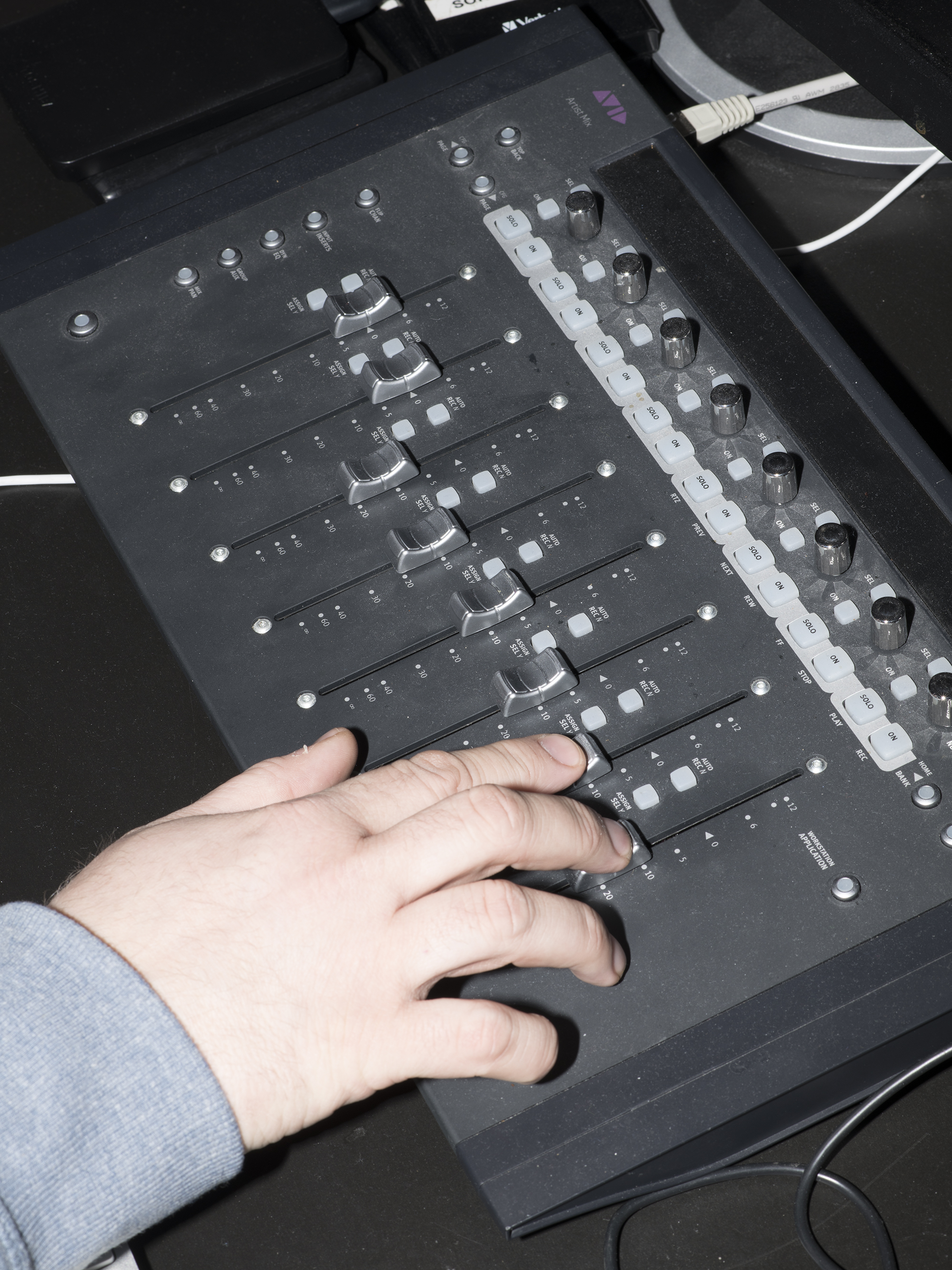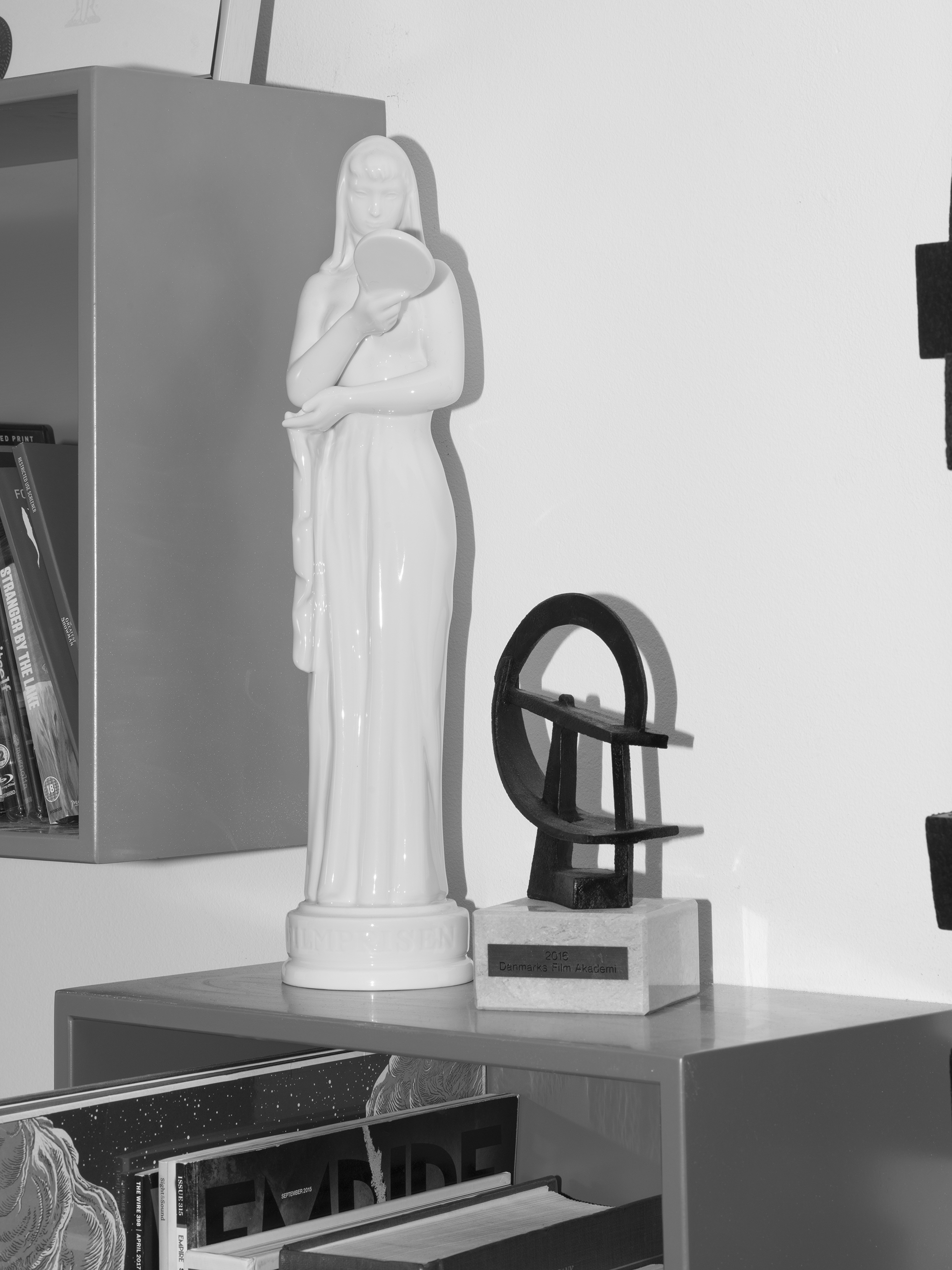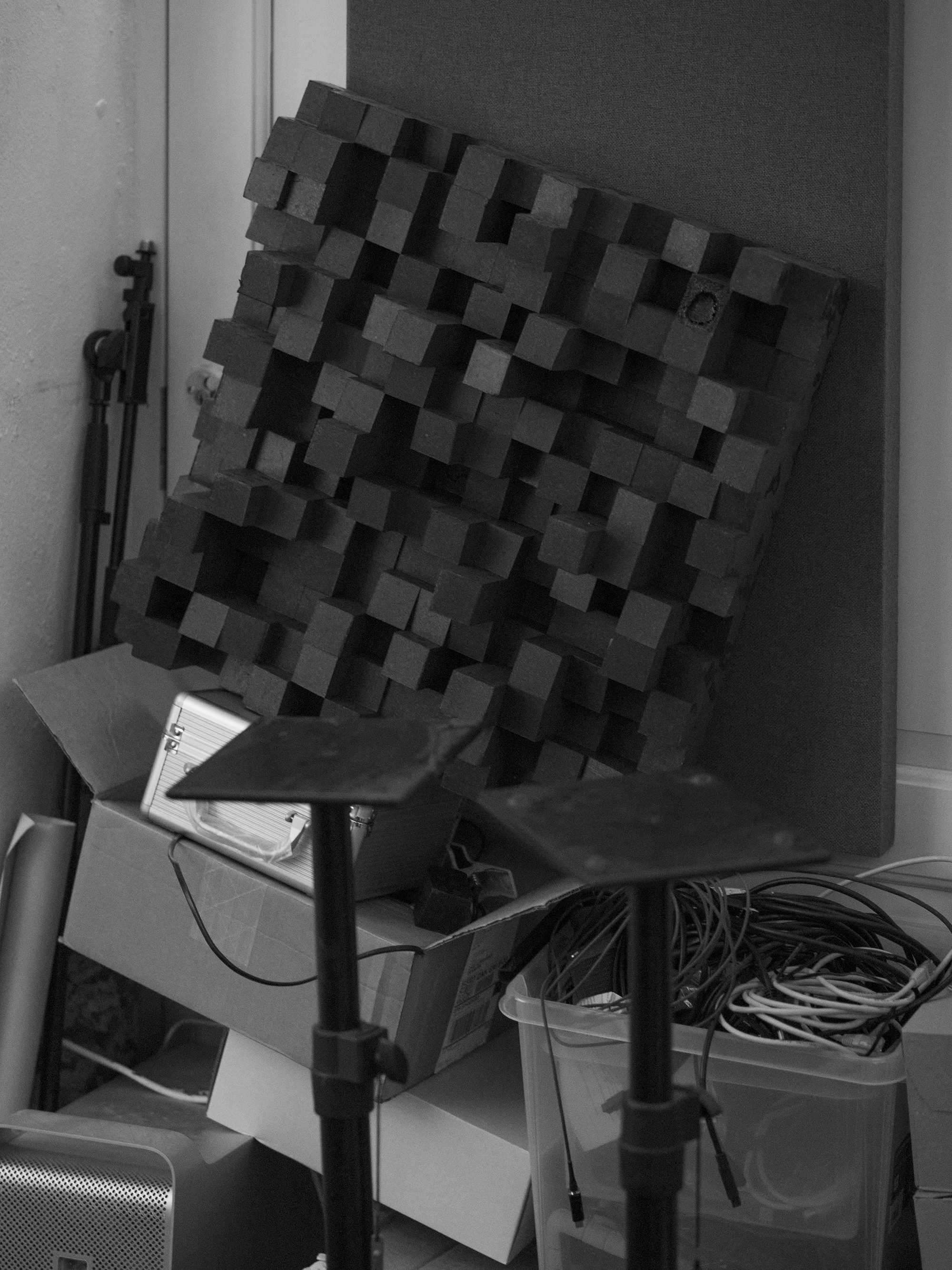The Sound designer on being the ears of the director, creating stories in sound, and staying musical in everything.
Photo: Emil Hartvig
Sound Matters: Film
Peter Albrechtsen
The Sound designer on being the ears of the director, creating stories in sound, and staying musical in everything.
By Nate Budzinski. Photos: Emil Hartvig.
“For example, I want the sound of the door to be like ‘squeak’, like funny. And if I do a horror lm then it needs to be like really shriek-y and evil... If I do a thriller then I want it to be almost like a vacuum, like you're closing the door and then ‘woosh’... There's a lot of personality even in small sounds.” I’m with Peter Albrechtsen in his Copenhagen sound studio discussing his preferred door sounds. Or, more specifically, the door sounds he prefers to use when working as a sound designer on films.
For close to two decades Albrechtsen has worked in varying sonic capacities on numerous films, from blockbusters like The Girl With The Dragon Tattoo and Dunkirk – which just won two Oscars for its sound editing and mixing – through to Lars von Trier’s Antichrist, art films like Bill Morrison’s The Miners’ Hymns (with the late composer, Jóhann Jóhannsson), and documentaries such as Bill Nye: The Science Guy, and The Queen of Versailles.
Take this broad range of capabilities and add in Albrechtsen’s regular sound art projects and radio work, and you’ll probably get that he’s very busy as well as restlessly curious about the storytelling potential of sound and music. “You can do amazing things with sound... in a way that sometimes can be difficult with images because you're so aware of the images.” Albrechtsen paraphrases legendary editor and ‘sound guru’ Walter Murch, who worked on Francis Ford Coppola’s Apocalypse Now and The Conversation (indeed, Murch coined the term sound design), “the visuals knock on the front door and the sound creeps in through the back door.”
Part composer, sound recordist, and mixer, the role of a sound designer is a varied and dynamic one. Albrechtsen describes his craft as being “kind of like the ears of the director and the ears of the movie, trying to create the sonic world and the sonic vocabulary of the film.”
In practical terms, it means Albrechtsen getting involved in the creative process as soon as he can, “when the script is being written. When I'm doing a documentary then already when the first shooting begins or when the idea maybe even comes up. And I'm trying to be involved that early to be able to make the sound a part of the story and the way that the director approaches the film... how do you set up a scene, will this be in a noisy place, will this be in a quiet place, do the actors need to shout or do they need to whisper?”
Growing up, Albrechtsen was exposed to an eclectic mix of music. “We were listening to music all the time, classical music and the Beatles. And [my father] also enjoyed more experimental modern music, like we listened to Morton Feldman or John Cage... I think it woke up my ears from an early age.” He recalls the moment when music opened a door to cinema for him. “I remember my parents watching [Alfred Hitchcock’s] Psycho... I guess I was five or six years old, lying next door trying to sleep but then hearing Bernard Herrmann's score playing through the door.... That's the first big soundtrack moment of my life.”
““ ...the more the sound feels like music and the more the music feels like sound, the better it is for me.””
From a young age Albrechtsen learned classical piano and then played in a metal band as a teenager. That playful, improvisatory musical mindset has stuck. “I really like that musical approach to sound. And the more the sound feels like music and the more the music feels like sound, the better it is for me.”
In his late teens he a ended the European Film College, where he had an epiphany. “I was really, really into movies. And I was really into music... the eight months that I was there I spent most of them in the sound studio, especially at night.” After, he attended the Danish Film School, then he worked as a sound recordist and designer on a growing number of productions.
Throughout he’s stayed focused on the storytelling power of sound. “Great directors like Paul Thomas Anderson or Terrence Malick or Andrei Tarkovsky, they are all characterised as amazing visual directors. But these directors are really amazing sonically.”
Our visual culture focuses on images and clear delineations, but sound is just as widespread and compelling, though working in subtler, more chaotic ways. “A lot of storytelling speaks to the brain, to the logic of things,” Albrechtsen claims. “Sometimes you really need to bring the sound to a very subjective, abstract, personal place like David Lynch does... it's so subjective, so abstract in a way. But it feels very real. Sound has this amazing ability of crossing the line between what is real and what is unreal, and what is authentic and what is fake.”
““I think good sound will survive, even in the most crazy kind of medium...””
I wonder why sound is so often used to create a sense of reality, and music regularly used to sign-post emotional mood in films, when sounds are supposedly so unstable and confusing? “You put on a sound and it's totally manipulated, edited, cut into, fitting with the sync of something and then it makes something seem more real. I love doing both fiction films and documentaries. In documentaries there has been so much discussion about authenticity... every one of us has our own personal opinion on what objectivity is... I've started talking about emotional authenticity which I find much more interesting.”
Albrechtsen regularly collaborates on international projects with musicians and artists outside the movie world – Chris Watson, Jacob Kirkegaard, Jana Winderen, among others – something that has been helped by both advancing sound recording technology, as well as changing creative mindsets. “I feel that the sound world is getting more and more limitless in a way... this idea that you're collaborating across borders, both borders of countries but also borders of categories.” It’s something, Albrechtsen says, that feeds into his film sound work. “In the movie world there's all these rules about how to do things and there's all these clichés about how things should sound... Now when the sound world is more open you can also explore things in a different way.”
Technology has made film and music more available than ever before, but does that accessibility come at the cost of the viewer’s experience, I ask? “I think good sound will survive, even in the most crazy kind of medium... It was the same way 30 years ago when people were listening with a small, crappy mono speaker... For me it’s made the world more open. I am really all for making the world as open as possible.”



